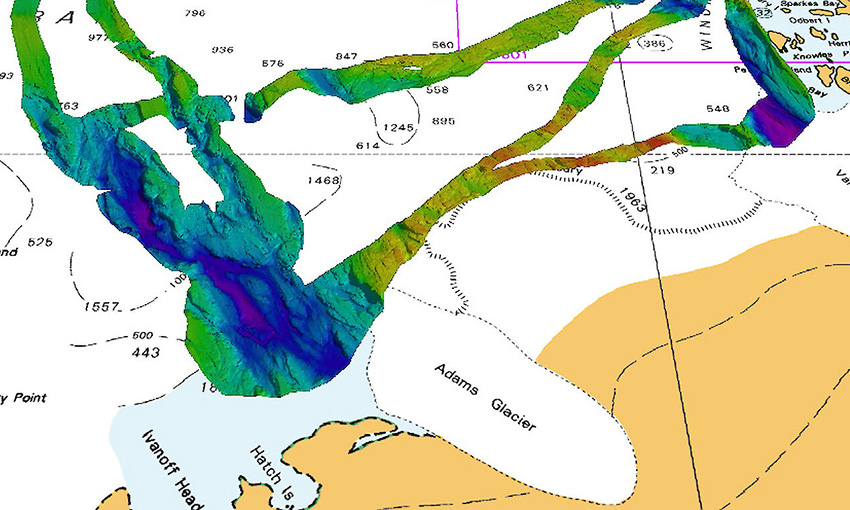ACOUSTCIANS onboard Australian icebreaker RSV Nuyina have discovered an underwater canyon.
The canyon was discovered when wild weather forced a temporary suspension of resupply work at Casey research station.
Rather than sit and wait for the weather to pass, voyage leadership used the time to map the seafloor at the nearby Adams Glacier, about 70 kilometres from the station.
They found a 2100 metre-deep, 9000-metre-wide canyon, extending more than 25 nautical miles off the glacier front.
This was the second time senior acoustician Alison Herbert and science systems engineer Tom Rushton Brumby have discovered an Antarctic seafloor feature with the ship’s acoustic instruments.
“This latest mapping adds to our initial discovery two years ago, on Nuyina’s maiden voyage to Casey, when we mapped the nearby Vanderford Canyon, which is 2200 metres deep, 2000 metres wide and at least 55 kilometres long,” Ms Herbert said.
“Nuyina’s multibeam echosounder gives us much greater capability for detailed mapping of the seafloor than we’ve ever had before, and these two new discoveries suggest there will be many more to come.”
The acoustics team initially discovered just the southern tip of the canyon before the ship had to return to Casey for cargo operations.
Voyage leader Keith Ashby said bad weather enabled the return of the vessel to the area a few days later, when further observations were taken in difficult conditions.
“Four-metre seas and 50-knot winds put a hold on our resupply operations at Casey, so we decided to ride out the weather in open water, allowing our acoustics team to conduct about 15 hours of mapping in front of Adams Glacier,” Mr Ashby said.
“Then on our way back to Australia we made another fleeting visit to fill in some remaining gaps, resulting in a comprehensive picture of this deep, glacial trough.
“As the voyage was primarily for station resupply, the fact that we had any opportunity to complete some seabed mapping was really pleasing. To discover a substantial feature like a large canyon was genuinely exciting.”
The Nuyina’s multibeam echosounder works by sending out pings of sound in a fan-shape beneath the ship and listens to the returning echoes to build a picture of the seafloor.
Among other things, maps of the seabed generated using multibeam echosounder data provide insights into the geological and glacial history of the area and allow scientists to identify areas for further study.
RSV Nuyina technology manager Lloyd Symons said the ship had risen to the challenge it was designed for.
“One of the specific objectives in building RSV Nuyina was to provide Australia with the capability to map the Antarctic continental shelf,” Mr Symons said.
“Discovery and mapping of these deep glacial canyons is key to developing better models of the interaction between the Antarctic ice sheet and the ocean. This is just the beginning.”

